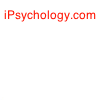| iPsychology
|
|
Electroconvulsive Therapy ( ECT )
Electroconvulsive Therapy has received some bad press as a result of what the treatment used to be. Yet "ECT has a higher success rate for severe depression than any other form of treatment." It has also been shown to be an effective form of treatment for schizophrenia accompanied by catatonia, extreme depression, mania, or other affective components. There's been a resurgence of interest in ECT because it has evolved into a safe option, one that works. But for a public influenced by Ken Kesey's One Flew Over the Cuckoo's Nest, whose associations with ECT start with the electric chair & move on to lightning bolts, electric eels & third rails, it makes for queasy conversation. For all of us. Let's replace a few of the myths with facts. ECT has a higher success rate or severe depression than any other form of treatment. It can be life-saving & produce dramatic results. It is particularly useful for people who suffer from psychotic depressions or intractable mania, people who cannot take antidepressants due to problems of health or lack of response & pregnant women who suffer from depression or mania. A patient who is very intent on suicide, & who would not wait 3 weeks for an antidepressant to work, would be a good candidate for ECT because it works more rapidly. In fact, suicide attempts are relatively rare after ECT. ECT is usually given 3 times a week. A patient may require as few as 3 or 4 treatments or as many as 12 to 15. Once the family & patient consider that the patient is more or less back to his normal level of functioning, it is usual for the patient to have 1 or 2 additional treatments in order to prevent relapse. Today the method is painless, & with modifications in technique it bears little relationship to the unmodified treatments of the 1940s. The patient is put to sleep with a very short-acting barbiturate, & then the drug succinycholine is administered to temporarily paralyze the muscles so they do not contract during the treatment & cause fractures. An electrode is placed above the temple of the nondominant side of the brain, & a second in the middle of the forehead (this is called unilateral ECT); or one electrode is placed above each temple (this is called bilateral ECT). A very small current is passed through the brain, activating it & producing a seizure. Because the patient is anesthetized & his body is totally relaxed by the succinycholine, he sleeps peacefully while an electroencephalogram (EEG) monitors the seizure activity & an electrocardiogram (EKG) monitors the heart rhythm. The current is applied for one second or less, & the patient breathes pure oxygen through a mask. The duration of a clincally effective siezure ranges from 30 seconds to sometimes longer than a minute, & the patient wakes up 10 to 15 minutes later. Upon awakening, a patient may experience a brief period of confusion, headache or muscle stiffness, but these symptoms typically ease in a matter of 20 to 60 minutes. During the few seconds following the ECT stimulus there may be temporary drop in blood pressure. This may be followed by a marked increase in heart rate, which may then lead to a rise in blood pressure. Heart rhythm disturbances, not unusual during the period of time, generally subside without complications. A patient with a history of high blood pressure or other cardiovascular problems should have a cardiology consultation first. Because as many as 20 to 50 percent of the people who respond well to a course of ECT relapse within 6 months, a maintenance treatment of antidepressants, lithium or ECT at monthly or 6 week intervals might be advisable. |
